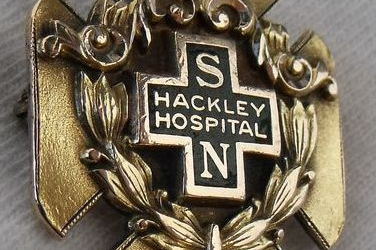If you are a watch lover who wants to have a high-quality replica watch but don't want to spend too much money,
www.watchesreplica.to will be your best choice.
CMS Has Yet to Notify Americans with Medicare of New Dis-enrollment Right New York, NY — People in private Medicare health plans can dis-enroll from their plans if they signed up after receiving misleading information, according to the Centers on Medicare and Medicaid Services (CMS). To date, neither CMS nor the insurance companies that operate Medicare private health plans have informed people enrolled in these plans that they can leave if they were duped into signing up. CMS has received thousands of consumer complaints about unscrupulous and aggressive sales tactics and seven companies have suspended marketing of their private fee-for-service plans. “We applaud CMS for acknowledging the fraudulent marketing activities of private plans, but our concern now is righting the wrong,” said Robert M. Hayes, president of the Medicare Rights Center, a national consumer service group. “While CMS informed their own hotline operators that Americans with Medicare have the right to leave plans they were tricked into joining, most consumers remain in the dark about their right to change their Medicare coverage. What good is a new dis-enrollment period, if no one knows about it or how it works?” The new right is known as the “exceptional circumstance special enrollment period” (SEP). Under CMS rules, most plan members are locked into their plans after March 31 for the rest of the year. More than 8 million people with Medicare are enrolled in Medicare private health plans this year. The Medicare Rights Center requested details from CMS on how the SEP works because no official guidance about required time frames or other specifics has been released, other than a one-paragraph... read more
Part D beneficiaries need more coverage Somerset County senior citizens who thought they were getting help with the doughnut hole provision of Medicare Part D prescription drug coverage with the new Somerset County Drug Discount Card received bad news from Tuesday’s county commissioners’ meeting. None of their purchases with the new NACo card made during their doughnut hole will count towards getting them out of the hole. The doughnut hole is a gap in Part D coverage when people go from paying a co-payment for their prescriptions to paying for the entire cost. Somerset County commissioners worked to get the National Association of Counties prescription drug card for people who don’t have insurance or who have only some insurance. The cards, available without cost to residents or to the county taxpayers, enable people to save 20 percent on medications. They are to be commended for doing that; the fault is not theirs. Congress should have passed Part D without a doughnut hole. Instead, Congress sided with the drug companies and shifted the cost to senior citizens. As Part D’s threshold for resuming coverage goes up each year, more and more senior citizens will be unable to pay for all their medications. A report by the Center for Economics and Policy Research states if the drug benefit had been administered through the existing Medicare system, rather than through private insurers, the doughnut hole would be considerably smaller at no additional cost to the government. If Medicare had been allowed to bargain directly with pharmaceutical companies, such as the Veterans Administration does, the savings would have been more substantial. Congress needs... read more
Warning: this Alert may cause headaches. Those readers who have ever roamed the Serbonian Bog[1] that is Medicaid will feel right at home. THE MEDICAID BOG The so-called Medically Needy – Medicare beneficiaries whose Medicaid eligibility depends on meeting a spend-down (or share of cost) each month or quarter – are faced with difficult challenges just using their Medicaid, since, in most states, they must prove to the state that they have incurred a certain amount in medical bills before their Medicaid becomes effective. These same individuals face even greater complications resulting from their participation in Medicare Part D’s low income subsidy (LIS). One contributing factor to these complications is that the government’s share of payment for prescription medications, which are obtained at little or no cost to the individual under LIS, does not count toward meeting the medically needy spend-down, the condition that qualifies a beneficiary for full Medicaid coverage. In other words, having LIS often results in an individual losing their Medicaid coverage. EXAMPLE: ONE CLIENT’S WANDERING IN THE BOG Medicaid in 2005. Our client, Ms. H. had high drug costs prior to the implementation of Medicare Part D. Although her income was above her state’s limit for “regular” Medicaid, when her drug costs were taken into account, her income dropped to the state’s medically needy income level and Medicaid picked up her health care costs beyond those expenses needed to qualify. In addition to coverage for any drugs beyond those needed to qualify, she got coverage for some or all of Medicare’s cost-sharing as well as for services offered by her state Medicaid program that are... read more
Nancy Wittebort is 77, takes six medications each day and didn’t want to “tolerate” the hours-long hassle of figuring out which prescription-drug plan would get her the best deal. The letter informing her that the monthly cost of her plan was going up about 60 percent Jan. 1 left her no choice. “I thought that was too much of a jump,” said Wittebort, one of more than a half-million Coloradans receiving Medicare benefits. Wittebort’s monthly premium would have rocketed to $43.30 — up from $26.40 last year and $18.40 three years ago, when prescription-drug plans became an option for Medicare recipients. The Highlands Ranch woman dumped her insurance company and switched to one with a lower premium and a higher deductible before the Dec. 31 deadline, hoping the trade-off is worth it. Many senior citizens — the ones who read warnings about increased premiums — began calling Medicare counseling centers weeks ago in an end-of-the-year scramble to switch drug plans. Now, counselors expect another round of calls from irate and confused seniors as Social Security checks hit mailboxes and seniors realize deductions for drug plans are higher than they expected. The monthly cost for prescription-drug plans has doubled and in some cases quadrupled since January 2006, when the program started. The 10 most popular plans across the country went up drastically this year, some by 70 percent and others by 200 percent. “This is something that will catch the eye of policymakers,” said Lindsey Spindle, vice president of Avalere Health, a health-care information company in Washington, D.C. “I think there are years when those kinds of cost increases are... read more
Term life insurance is life insurance coverage provided for a fixed term agreed upon by the insurance company and policy holder. With this type of life insurance policy, the policy holder pays a set premium for the coverage, and if the person happens to die during this time their beneficiaries will receive a full payout of the agreed upon death benefits. After that term has ended so does the coverage. Term life insurance is the most popular type of life insurance for a number of reasons. First is that it’s a cheap alternative to permanent or whole life insurance. Term insurance uses the same mortality tables for determining your premium as permanent life insurance, and a death benefit which is always income tax free, but the insurance company saves money because the term life insurance plans often expire without a payout. Permanent plans, on the other hand, always have a payout, eventually, and as such have a higher premium in order to cover these additional costs. Another perceived advantage of term life insurance is its flexibility and convenience. You choose the amount of time that you want life insurance coverage and can even choose as little as a year. Under term policies you have the option to renew or discontinue your life insurance according to your changing coverage needs. There is one potential drawback of term insurance and that is the unpredictability of the insurance market. When your term is up and you want to renew, or perhaps change companies, you run the risk of having to pay a new, higher rate than before with potentially different conditions on... read more
Attention seniors — and those who love them. Medicare Part D — the prescription drug program — is back again. From Nov. 15 through Dec. 31, there is a new “open enrollment” period for 2008 Part D coverage. So, here’s a reminder of how Medicare Part D works, along with a quick lesson in how to use the Medicare.gov “PlanFinder” tool to choose the plan that’s best for you. Medicare Part D is the federal government program started in 2006 to make sure that all seniors can get access to prescription drugs through a national insurance program, provided by private insurers. Since it is an insurance program, every senior must sign up, even if he is not currently taking prescription drugs, unless he is covered by a “creditable” plan such as a workplace health insurance program or corporate retiree plan. Many seniors take no prescription drugs. Still, they need to sign up for the least expensive monthly plan, or face steep penalties when they do sign up in the future as they start taking necessary medications. Last year, Washington created the standards for what must be covered in Part D, but it allowed private insurance companies to compete on the structure of their plans as well as the prices and co-payments they would charge. The result was a complicated challenge of comparing many variables, including the inexplicable “doughnut hole” that eliminates coverage after a certain level, then reinstates it after the “catastrophic” level of costs is reached. To make choices even more confusing, Washington also subsidizes Medicare “HMOs” to include prescription drugs in their coverage. So, seniors could choose... read more
Premiums for the top 10 prescription plans are up an average of 16% from last year, a new study finds — a hardship for many people. As if escalating prices for food and gas weren’t enough of a worry, most seniors in Medicare’s prescription-drug program are paying considerably higher monthly premiums for coverage this year, according to a study to be released today. Those in the 10 largest plans — which account for nearly three-fourths of seniors signed up for drug coverage — are paying an average of $26.39 a month, or 16% more than last year, according to the analysis by Avalere Health, an information company serving the healthcare industry. The rise is modest in dollar terms, and some of the top plans actually lowered their premiums for 2008. But on average, the percentage increase for the drug plan is greater than the change in Medicare’s Part B premium for outpatient care, which rose only 3% in 2008. “A 16% increase is significant in and of itself, because premiums are rising rapidly at a time when Medicare beneficiaries are finding it harder to afford it,” said Dan Mendelson, president of Avalere. “These are individuals on a fixed income who are facing rapidly rising prices elsewhere in the economy.” Indeed, he added, premiums for many seniors appear to be going up faster than the cost of coverage for commercial insurance plans that serve workers and their families. Data from Mercer, a benefits consulting firm, show that drug-benefit costs rose a little more than 9% last year for large employers. Both kinds of coverage are delivered by private insurers, but... read more
Medicare premiums might soon start crushing retiree spending power. I estimate that many a long-lived couple might need to reduce their retirement spending on non-medical consumption by 13 percent to 26 percent to avoid sharp declines in purchasing power as they get older. This is not an alarmist fantasy. My estimates come from projecting historical cost rates into the 30-year retirement of a couple retiring this year. Here are the facts: Since 1965, the year Medicare was created, the consumer price index has risen at a 4.5 percent annual rate ~ but the Medicare premium has inflated at an 8.4 percent rate over the same period. Worse, the gap appears to be growing. Between 2000 and 2008, the monthly Medicare premium grew from $45.40 to $96.40. That’s a 9.9 percent annual rate of increase. During the same eight-year period, the consumer price index rose at only 2.8 percent a year. So Medicare costs are now rising 7 percentage points a year faster than the general inflation rate. You can understand what this means for real people by considering the future of an imaginary couple, Mr. and Mrs. Retirenow. They both turned 65 in January. They have $10,000 in cash, $300,000 in IRA investments, and they own their $200,000 home in Texas, free and clear. He collects $1,200 a month in Social Security, slightly above average. She collects $600 a month in spousal benefits. Neither has a pension, but they think they can get along pretty well on $21,600 in Social Security benefits and $15,000 from their IRA accounts, a total of $36,600 a year. They feel pretty safe about... read more
The Humana Gold Choice Medicare Advantage plan is a private fee-for-service (PFFS) plan. That means, strictly speaking there isn’t a provider network with this kind of plan. However, since there is no network, your provider chooses at the point of service whether to accept this Medicare PFFS plan or not. A Medicare Advantage Private Fee-for-Service plan works differently than a Medicare supplement plan. The network providers (that is, providers who have signed contracts with Humana) have already agreed to see members of our plan. If your provider is not one of Humana’s network providers, then the provider is not required to agree to accept the plan’s terms and conditions, of payment, they may choose not to provide health care services to you, except in emergencies. If this happens, you will need to find another provider that will accept our terms and conditions of payment. Humana has also included Part D prescription drug coverage into this plan. Plan Benefits Outpatient Mental Health Care $30 copayment for each Medicare-covered individual therapy visit $30 copayment for each Medicare-covered group therapy visit $30 copayment for each Medicare-covered therapy visit with a psychiatrist 20% of the cost for Medicare-covered partial hospitalization program services Outpatient Services/Surgery 20% of the cost for each Medicare-covered ambulatory surgical center visit 20% to 25% of the cost for each Medicare-covered outpatient hospital facility visit Ambulance Services $150 copayment for Medicare-covered ambulance benefits. Emergency Care $65 copayment for Medicare-covered emergency room visits $25,000 plan coverage limit for emergency services outside the U.S. every year. Outpatient Rehabilitation Services There may be limits on physical therapy, occupational therapy, and speech and language pathology services If so, there may be exceptions to these limits. $30 copayment [or 25% of the... read more
Optimum Healthcare is one of the nations most popular providers of Medicare health plans. The health maintenance organization (HMO) is based in Tampa, and was established in 2004. It’s operated by a group of physicians and offers policies to the residents of more than two dozen Florida counties. They offer four different Medicare health plans depending on where you live. There’s also a company office located in Spring Hill. Optimum Health Care Medicare Advantage plans offer more benefits than the original Medicare and include those with Part B premium reductions, prescription drug plans, and special needs plans (SNP), which are designed for those with chronic conditions. All of the plans come with zero deductibles and offer benefits such as dental, vision, and hearing coverage as well as fitness programs. Plans with premium reductions for Part B include the Optimum Gold Rewards Plan (POS HMO), Diamond Rewards (POS HMO SNP), and Diamond Rewards COPD (POS HMO SNP). The part D prescription drug coverage plans provide both medical and drug insurance which can help you save on health care on cost. These include the Optimum Platinum Plan (POS HMO), the Gold Rewards Plan (POS HMO), Diamond Rewards (POS HMO SNP), Diamond Rewards COPD (POS HMO SNP), and the Emerald Partial and Full plan. To be eligible for the Diamond Rewards plan you need to be diagnosed with cardio vascular disease, diabetes mellitus, or chronic heart failure. To be eligible for the Diamond Rewards COPD plan you need to be diagnosed with COPD (chronic obstructive pulmonary disease). For the Emerald Plan you need to be eligible for both Medicare and Medicaid benefits (dual eligible). The special needs plans are for those with specific chronic diseases. All... read more
Site Search:
MedicareHelp.org is a privately-owned Non-governmental agency. The government website can be found at HealthCare.gov.
Please contact Medicare.gov, 1-800-MEDICARE, or your local State Health Insurance Program (SHIP) to get information on all of your options. Enrollment depends on the plan’s contract renewal.
Every year, Medicare evaluates plans based on a 5-star rating system.



